Spine stereotactic body radiotherapy – Experience from Cleveland Clinic
Images
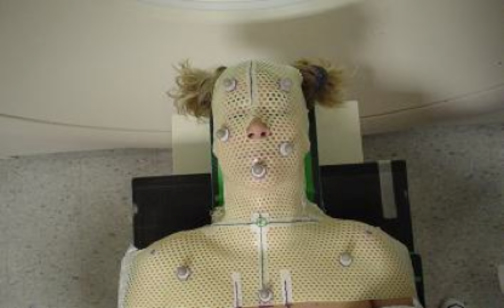

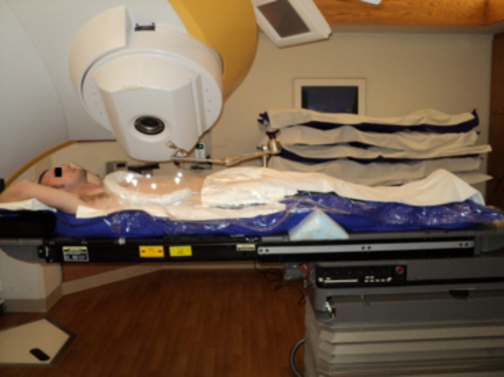
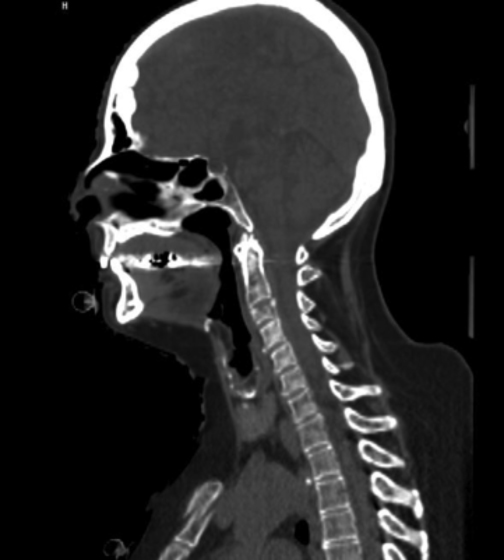
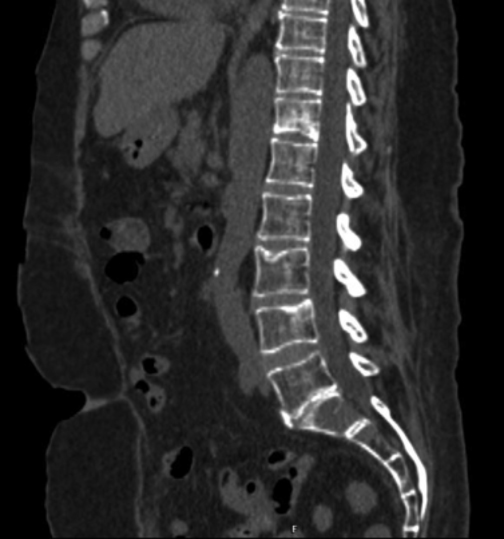
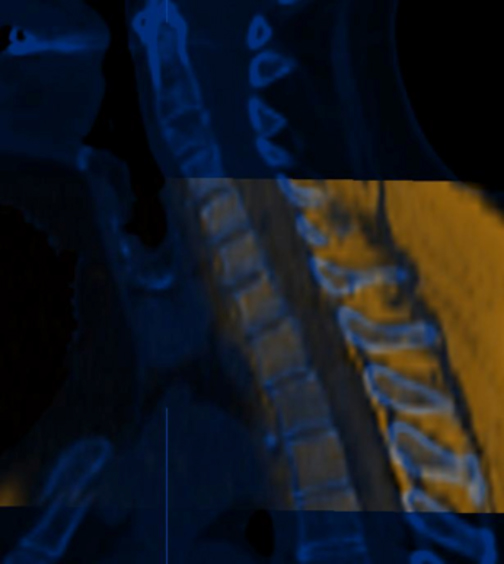

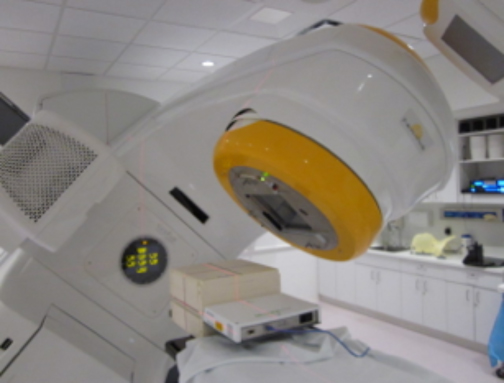
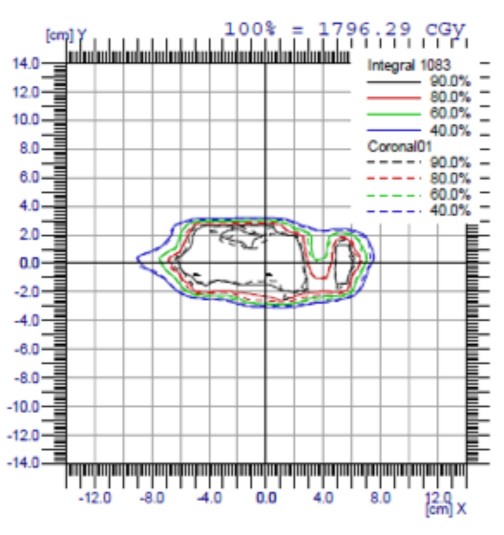
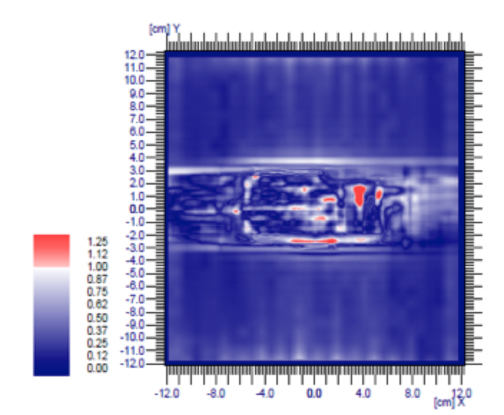
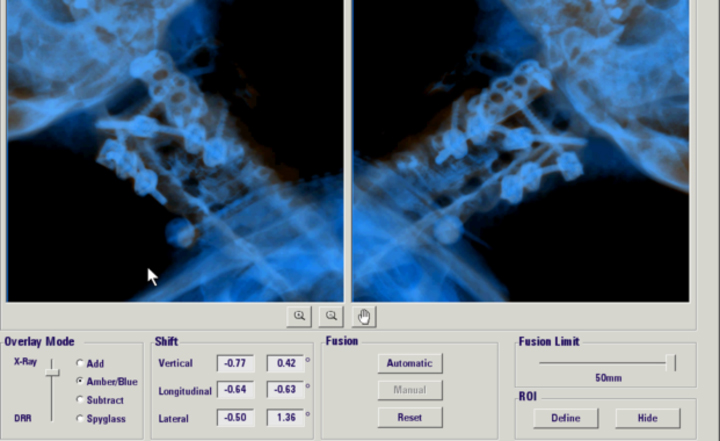
After achievements in the treatments of intracranial tumors with stereotactic radiosurgery (SRS) on a specialized modality, such as GammaKnife (GK) (Leksell Gamma Knife, Elekta, Stockholm, Sweden), the investigation of alternative technologies emerged. As a result, medical linear accelerators (linacs) in radiosurgery became viable treatment options. These versatile machines can be used for different radiosurgery and radiotherapy treatments.
Initially, technological developments in hardware and software, such as the X-Knife SRS System (Integra Radionics, Inc.) in the 1980s,and the BrainLab Beam Shaping SRS System (Brainlab AG, Feldkirchen, Germany) in the 1990s, permitted conventional linacs to adapt into radiosurgery. They provided stereotactic systems of head frames and rings with posts and pins, and magnetic resonance (MR), computed tomography (CT), and angiography fiducial localization boxes for imaging, similar to those of the GK machine. Eventually, almost a decade later, a new generation of radiation therapy machines dedicated to radiosurgery was born.
The recent technological innovations integrate high-precision radiation dose delivery and precise tumor localization. These systems maybe used with rigid frames and special applicators, such as cones, or with multileaf (MLC) or micro-multileaf collimators (mMLC). They can also deliver noninvasive, or minimally-invasive, frameless treatments that overcome the restrictions of frame-based radiosurgery and increase flexibility for imaging, planning, and treatment. These linacs, equipped with image-guided radiotherapy (IGRT); constitute an excellent platform for SRS and SBRT treatments. Custom-fitted devices, such as aquaplast head-to-shoulder masks, vacuum bags, and body wraps of radiotranslucent material, provide immobilization with or without implanted fiducial markers for image guidance. Treatments can be multifractionated and applied to intracranial and extracranial targets. The technique is based on the use of multiple noncoplanar arcs of circular or dynamically shaped beams or step-and-shoot techniques converging to the machine isocenter, which is stereotactically placed at the center of the imaged target volume. The dose distribution is shaped by selectively blocking parts of the circular field, dynamical shaping with MLC, changing arc angles and weights, using more than one isocenter, combining arcs and stationary fields, and using intensity-modulated radiation therapy (IMRT) and volumetric-modulated arc therapy (VMAT). These dedicated linacs deliver high-precision conformal doses to irregularly shaped tumors while sparing adjacent organs at risk, making them suitable for dose escalation protocols and potentially resulting in higher tumor control rates and fewer side effects.
Linac-based stereotactic radiosurgery is used to treat cancers of the brain, lung, liver, pancreas, kidney, prostate, and spine. Here we present a review of SBRT treatment, focusing in particular on spine radiosurgery..
Spine SBRT
A significant percentage of cancer patients (50%–85%)1 develop skeletal metastases, about two-thirds of which are located in the spine.2 Bone, particularly in the spinal column, is the third-most common site of metastasis after the lungs and liver.3 Tumors which have spread to the bones (osseous metastases) constitute a serious health problem, considering the increase of cancer incidence worldwide and the longer life expectancy of patients with cancer.4 The spine represents an important and sensitive target due to the frequency of its involvement and the serious potential disabilities that result from the progression of disease and intrusion on the spinal cord and sensitive nervous tissue.
Spinal metastases can cause significant morbidity, pain, and neurological deficits and affect quality of life.4 In up to 20% of cases, patients develop symptomatic cord or nerve root compression.5 Osteolytic vertebral compression fractures are becoming a problem due to increased patient survival with ongoing bone loss. Usually, the main symptom of spinal metastasis is pain (83%-95% of cases),6,7 but a patient may experience limb heaviness and weakness, motor dysfunctions, such as paralysis, anal and urethral sphincter dysfunction, and sexual dysfunction.6,7 Proper treatment and management of spinal metastases is a medical challenge requiring interdisciplinary collaboration. Treatment must be individually tailored to the needs of each patient, considering their overall prognosis for survival, and based on their disease situation including bony stability, compression of neural structures, tumor radiosensitivity, pain, and the extent of metastasis.2 Various palliative surgical and radiotherapeutic options (fractionated external-beam radiation therapy, EBRT) have been recommended and widely used for the management of spinal metastases. Pain medications, corticosteroids, and chemotherapy have also been used.5 EBRT in conjunction with reconstructive open surgical procedures (decompression, stabilization with internal fixation hardware, and bone grafting) has also been practiced to prevent potential structural instability and progressive vertebral collapse. But all these treatments are usually not very effective over the long run.5 A number of programs started investigating high-precision radiosurgery for spinal metastasis after the success achieved by SRS in brain tumors..5 With the advances in imaging, computer technology, and radiation delivery systems, radiosurgery is becoming the standard of care in the treatment of spinal metastases. Also, with the recent surge in interest in minimally invasive therapeutic approaches, physicians are exploring high-precision spine radiosurgery combined with minimally-invasive restorative surgical procedures, such as kyphoplasty or vertebroplasty.
The spine SBRT program at the Cleveland Clinic opened in 2006. We have treated 562 patients and performed 619 procedures. A summary of our spinal metastasis radiosurgery, including the equipment used, the treatment protocol and doses prescribed, localization, immobilization, image-guided radiation therapy (IGRT) methods, and quality-assurance (QA) procedure is presented.
Radiation delivery equipment
The linear accelerator (linac) used at Cleveland Clinic is the Novalis (Brainlab, Feldkirchen, Germany), a recent technological innovation in radiation therapy. The system integrates high-precision dose delivery and precise tumor localization, making it suitable for dose escalation to achieve higher control rates with fewer side effects. It uses the intensity-modulated radiosurgery (IMRS) mode to deliver high-precision conformal doses to irregularly-shaped tumors while sparing adjacent organs at risk. This is achieved by dynamically modulating the intensity of the beams with a computer-controlled accelerator equipped with a fine mMLC. Image-guided targeting is ensured by high-resolution x-ray imaging(ExacTrac Positioning System, Brainlab). Internal structures or implanted markers are imaged right before treatment using 2 x-ray tubes housed in the linac floor and two amorphous silicon flat panel detectors mounted in the ceiling. By comparing the x-rays to digitally reconstructed radiographs (DRR) from a reference CT used in planning, the tumor is pinpointed with a high precision (< 2 mm).
Immobilization
Accurate target immobilization and localization and precise delivery of radiation are of utmost importance. Because high doses are given, often in a single fraction, errors may result in irreparable damage. To deliver high dose to the spine lesion while sparing the cord, the intra-fraction motion due to respiratory, skeletal/muscular, cardiac, and gastrointestinal effects has to be greatly minimized, if not eliminated. For spine lesions, the intra-fraction motion is due mostly to discomfort or pain for lying on a rigid surface for a long period of time. Consequently, a robust immobilization device is a must. Historically, before the advent of IGRT, an invasive solution was proposed to immobilize the spine by skeletal fixation above and below the region of interest.8 The spinal column is highly mobile and rigid fixation is not practical.5 Other noninvasive body frames(BF) were also proposed.9 The patients are kept in the BF during the whole procedure, from simulation to treatment, which takes several hours.With the introduction of IGRT, such as CT on rail, kilovoltage, and megavoltage cone-beam CT (kV and MV CBCT), or a pair of stereotactic kVx-rays, performing the whole procedure in one day became unnecessary.10 The patient is immobilized and simulated one day and brought back for treatment a few days later.
At Cleveland Clinic, 2 types of custom-fitted immobilization devices are used, depending on the location of the lesion. For an average height patient, with a lesion between C1 and T5, we use the 5-point Efficast system (Orfit Industries, Antwerp, Belgium), a thermoplastic head to shoulder mask illustrated in Figure 1.
For lesions located beween T6 and the sacrum, we use the BlueBAG BodyFix Vacuum Cushions (Elekta Inc., Medical Intelligence,Schwabmuenchen, Germany Co.). It is a dual-vacuum technology device with a full-body- length vacuum bag/pillow under the patient anda body wrap of radiotranslucent material that provides a vacuum seal over the top of the patient. The device is represented in Figure 2. The cutoff vertebra body (T5) can be moved superior or inferior depending on the height of the patient. For example, we could use the five-point Efficast system up T4 for a tall person, and we may extend it to T6 for a short patient.
Imaging and simulation
Plain x-ray may be used to identify metastatic lesions and evaluate spinal stability,7,11 but x-rays are insensitive in early stages of diagnosis.6,7,11 MRI is the gold-standard for diagnosis of spinal metastasis. It allows the visualization of infiltration and/or compression of paravertebral,osseous, and neural tissue.6,7,11 T1- and T2-weighted imaging, contrast-enhanced and fat-suppressed studies are usually used.7 CT imaging is an excellent modality in assessing the osseous spine and has a high degree of accuracy in identifying metastatic lesions, vertebral destruction, and spinal stability.6 At the Cleveland Clinic, we use both a CT and an MRI fused together.
CT Scan
After the immobilization is constructed, all spine patients are scanned using 1.5-mm thick contiguous slices. To make counting the vertebral levels easier when the lesion is superior to T10, we scan from C1 to 2 vertebral bodies inferior to the lesion (Figure 3). When the lesion is inferior to T10, we scan from 2 vertebral bodies superior to the lesion down to the sacrum (Figure 4).
MR imaging
All spine patients undergo high-definition, 3-mm MRI scans around the lesion, T1 and STIR sequences, usually the same day as the CT simulation. The scans are performed on a flat couch without immobilization. The imaging technologists strive to position the patient as close as possible to the treatment position. In some cases, due to the presence of implanted hardware that makes MRI not very useful, the patient is sent for CT angiogram (CTA) for better visualization of the spinal cord.
Fusion of imaging data sets
The MRI or CTA images are imported into the treatment planning system, iPlan RT 4.1 (Brainlab, Feldkirchen, Germany) and fused to the simulation CT. The fusion is perfected around the region of interest. Occasionally, some rotation may occur outside the region of interest, but it may be ignored (Figure 5).
Contouring
Neurosurgeons at the Cleveland Clinic delineate the gross tumor volume (GTV) and the clinical target volume (CTV). The CTV typically includes the whole vertebra body and sometimes the pedicles, depending on the GTV location. In our practice, we do not add any margins to the CTV to generate the planning target volume (PTV=CTV). The cord or the cauda equina is delineated based on the high-definition MRI.The cord/cauda contours are extended 5 mm (3 slices) superior and inferior to the CTV (Figure 6).
Planning
In treating spinal metastasis with SBRT, our fractionation scheme is to deliver 16 Gy to the lesion in one fraction. We use IMRT techniques and 7 to 9 beams to generate the treatment plan. In general, we try to avoid anterior beams. Usually, we use 7 posterior coplanar beams. The gantry angles would be: 265, 230, 205,180, 155, 130, and 105 degrees. The beam arrangement might be different, depending on the shape of the tumor. Sometimes we obtain a better plan using mostly posterior coplanar beams with gantry angles: 300, 260, 220, 180, 140,100, and 60; or 9equidistant, coplanar beams with gantry angles: 0, 40, 80, 120, 160, 200, 240, 280, 320. Also, the beam arrangement may vary to accommodate a particular condition of the case. For example, when a patient has had a partial nephrectomy, we arrange the beams so that we avoid irradiating the opposite kidney.
On iPlan RT, we use between 15 and 20 segments per beam. We select 2 mm as a nominal grid size for dose calculation, with the adaptive grid feature for smaller structures turned on. If the treatment planning system is not equipped with the adaptive grid feature, we use the smallest grid size that the memory of the system allows.
The criteria for an acceptable plan are mainly ample coverage of the PTV (at least 90% of the volume receives the prescription dose),while sparing the cord or organ at risk (OAR). The cord is limited to no more than 10% of the volume as defined earlier, receiving 10 Gy or more and a maximum point dose limited to 14 Gy. The contraints on the cauda equina are no more than 10% of volume receives 12 Gy or more and the maximum point dose is 16 Gy. RTOG 0631 protocol is a good resource for other organ limits.12 Hot spots are desirable in the middle of the CTV (prescription to 70%-90% isodose line, IDL), but to be avoided within 3 mm to 4 mm of the cord.
Patient-specific IMRT QA
Once the plan has been approved by the physician, it is delivered on the MatriXX QA system ( (IBA Dosimetry GmbH, Schwarzenbruck,Germany) illustrated in Figure 7. It consists of an ionization chamber array, a gantry angle sensor, a MultiCube phantom, and OmniPro RT software. Other systems may also be used. The measured data and the prediction from mapping the plan onto the MatriXX phantom are compared using the Gamma 3%/3 mm criteria. A typical report of the results is given in Figure 8.
Patient setup and treatment delivery
Most patients are set up using the ExacTrac IGRT system. The patient is prepositioned using the superficial infrared markers. Once the tumor is approximately at the isocenter, the final position is found by taking 2 stereotactic x-rays and fusing them, using bony anatomy, to 2 digitally reconstructed radiographs (DRRs) in the same planar orientation (see Figure 9). The 2 DRRs are generated from the simulation CT. The patient is then shifted to the final position and an anterior and lateral ports are taken to confirm the vertebra body tobe treated. Once the ports are approved, the treatment begins. Usually, we take a verification x-ray with ExacTrac midtreatment to make sure the patient did not move. The treatment is usually takes about 30 minutes.
Conclusion
When done correctly, SBRT treatments of the spine are very safe and feasible, and results show good local control with minimal adverse effects.With these newer approaches, we see a paradigm shift in the way we think about spinal metastases. Although bone metastases represent advanced disease, some patients can be expected to have a survival measured in years warranting the investigation of novel, high-tech approaches.
References
- Manoj-Thomas A, Dabke H, Hammer K, et al. Spinal metastasis from a primary parotid carcinoma: A case report. Joint Bone Spine. 2006;73:573-575.
- Delank K, Wendtner C, Eich H, Eysel P. The Treatment of Spinal Metastases. Dtsch Arztebl Int. 2011;108:71-79.
- Jerjes W, Upile T, Petrie A, et al. Clinicopathological parameters, recurrence, locoregional and distant metastasis in 115 T1-T2 oral squamous cell carcinoma patients. Head Neck Oncol. 2010;2:9.
- Bartels R, Van Der Linden Y, Van Der Graaf W. Spinal extradural metastasis: Review of current treatment options. CA: A Cancer Journal for Clinicians. 2008;58:245-259.
- Balagamwala E, Cherian S, Angelov L, et al. Stereotactic body radiotherapy for the treatment of spinal metastases. J Radiat Oncol. 2012;1:255-265.
- Harel R, Angelov L. Spine metastases: Current treatments and future directions. Eur J Cancer. 2010;46:2696-2707.
- Sciubba D, Petteys R, Dekutoski M, et al. Diagnosis and management of metastatic spine disease. J Neurosurg Spine. 2010;13:94-108.
- Hamilton AJ, Lulu BA, Fosmire H, et al. Preliminary clinical experience with linear accelerator-based spinal stereotactic radiosurgery. Neurosurgery. 1995;36:311–319.
- Lohr F, Debus J, Frank C, et al. Noninvasive patient fixation for extracranial stereotactic radiotherapy. Int J Radiat Oncol Biol Phys.1999;45:521-527.
- Yenice KM, Lovelock DM, Hunt MA, et al. CT image-Guided intensity-modulated therapy for paraspinal tumors using stereotactic immobilization. Int J Radiat Oncol Biol Phys. 2003;55:583-593.
- Molina C, Gokaslan Z, Sciubba D. Diagnosis and management of metastatic cervical spine tumors. Orthop Clin North Am. 2012;43:75-87.
- Ryu S. RTOG 0631 Protocol Information. Phase II/III Study of Image-Guided Radiosurgery/SBRT for Localized Spine Metastasis—RTOG CCOP Study. Radiation TherapyOncology Group. http://www.rtog.org/ClinicalTrials/ProtocolTable/StudyDetails.aspx?study=0631. Updated May 6, 2013. Accessed May 21, 2013.